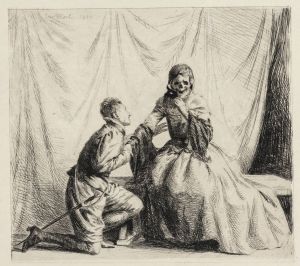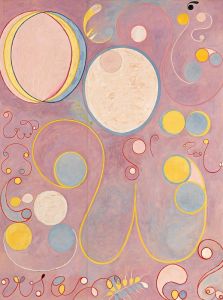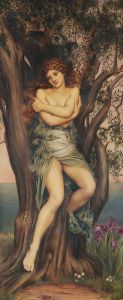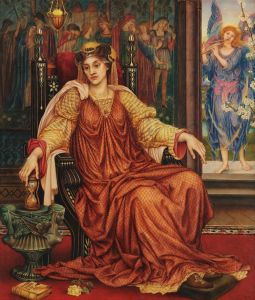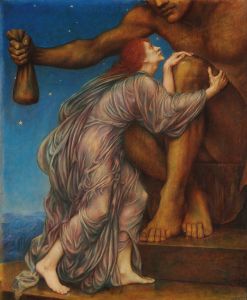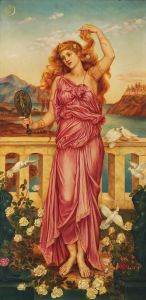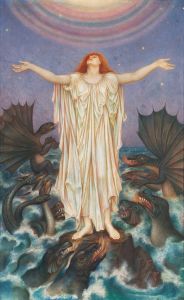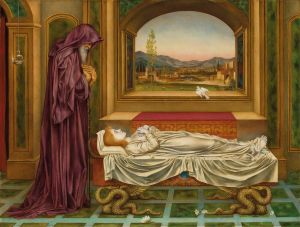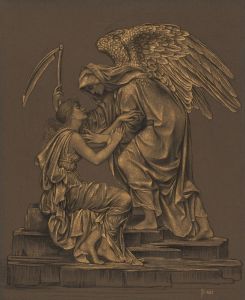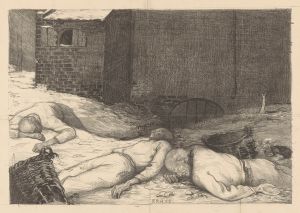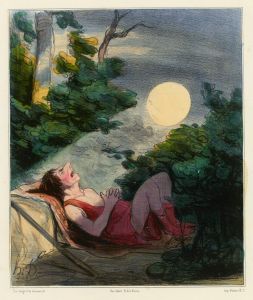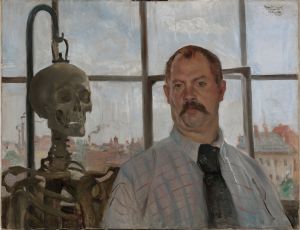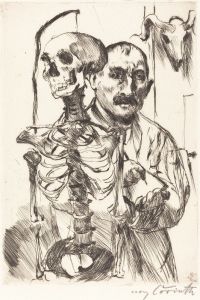
Sleep and Death, the Children of the Night
A hand-painted replica of Evelyn De Morgan’s masterpiece Sleep and Death, the Children of the Night, meticulously crafted by professional artists to capture the true essence of the original. Each piece is created with museum-quality canvas and rare mineral pigments, carefully painted by experienced artists with delicate brushstrokes and rich, layered colors to perfectly recreate the texture of the original artwork. Unlike machine-printed reproductions, this hand-painted version brings the painting to life, infused with the artist’s emotions and skill in every stroke. Whether for personal collection or home decoration, it instantly elevates the artistic atmosphere of any space.
Evelyn De Morgan's painting Sleep and Death, the Children of the Night is a notable example of her work as a Pre-Raphaelite artist. Completed in 1878, the painting reflects De Morgan's interest in classical mythology, symbolism, and themes of mortality and transcendence. The artwork depicts two male figures, Sleep (Hypnos) and Death (Thanatos), who are personifications from Greek mythology. These figures are traditionally described as brothers and the offspring of Nyx, the goddess of the night, which is referenced in the painting's title.
In the composition, Sleep and Death are portrayed as youthful, ethereal beings, lying side by side in a serene and dreamlike landscape. The figures are draped in flowing garments, with soft, muted tones that enhance the tranquil atmosphere of the scene. The use of light and shadow in the painting emphasizes the contrast between the two figures while maintaining a harmonious balance. Sleep is often associated with rest and peace, while Death symbolizes the eternal stillness, and De Morgan's depiction captures this duality with subtlety and grace.
Evelyn De Morgan was deeply influenced by the Pre-Raphaelite Brotherhood, a movement that sought to revive the detail, vivid colors, and complex compositions of early Renaissance art. Her work often incorporated allegorical and spiritual themes, reflecting her interest in mysticism and her belief in the immortality of the soul. Sleep and Death, the Children of the Night is a prime example of her ability to blend mythological subject matter with her personal artistic vision.
The painting is also significant in the context of De Morgan's broader body of work, which frequently explored themes of life, death, and the afterlife. Her approach to these subjects was shaped by her philosophical and spiritual beliefs, as well as her commitment to social and artistic reform. De Morgan's work often challenged traditional gender roles and celebrated the strength and resilience of the human spirit.
Today, Sleep and Death, the Children of the Night is recognized as one of Evelyn De Morgan's most evocative and thought-provoking works. It exemplifies her technical skill, her engagement with classical and mythological themes, and her ability to convey profound ideas through her art. The painting is part of the De Morgan Collection, which preserves and promotes the legacy of Evelyn De Morgan and her husband, the ceramicist William De Morgan.





